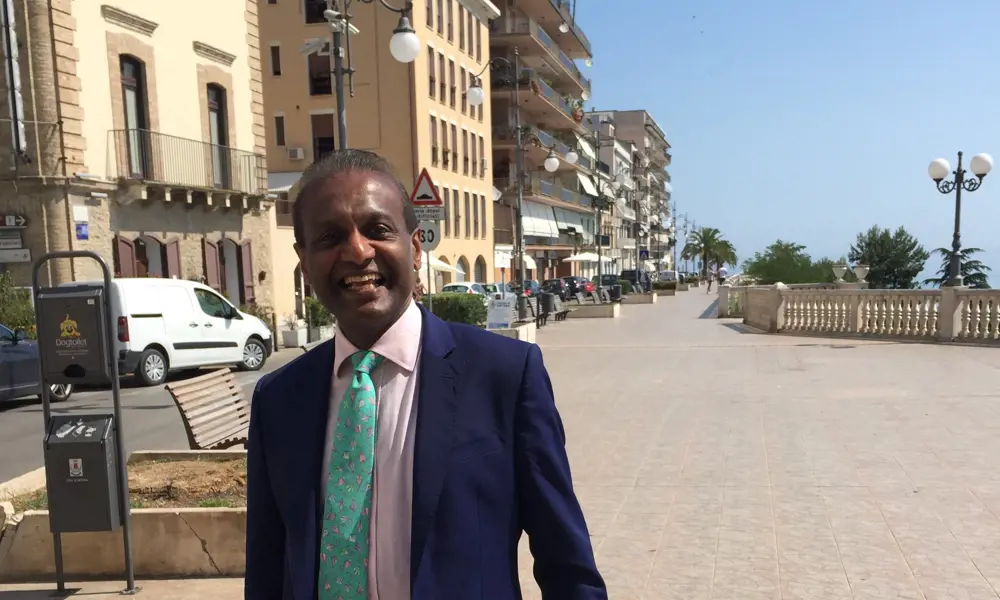
Sound moorings for a renewable career
Even in the 1990s, Rajapillai (RV) Ahilan’s offshore engineering projects had to take account of climate change. Now Ahilan sees research into wave energy as a potential source of technologies for other areas of marine engineering. Since the start of his career, Ahilan has provided technical advice to operators of just about anything that moves in the marine world. Ahilan and his colleagues have advised operators moving oil and gas rigs around the world, people with cargo stranded in the Suez canal and a cruise liner operator with a vessel that ran aground off an Italian island. He recently became Chief Energy Transition Officer at ABL Group following the merger of AqualisBraemar and London Offshore Consultants (LOC). In his new position Ahilan is “addressing energy and oceans, or energy and maritime”, with 900 people working out of 39 countries. The role has taken him increasingly into renewable energy, adding advising operators of offshore wind farms to a growing portfolio of renewable technologies. As Ahilan points out, offshore renewable technologies such as wind turbines, wave energy and tidal power all need engineering skills that would be familiar to those who created and operated offshore oil rigs.
Since the start of his career, Ahilan has provided technical advice to operators of just about anything that moves in the marine world
Education
It was more by chance that Ahilan ended up as an engineer with a degree in civil engineering. Born in the northern Tamil part of Sri Lanka, his parents were great believers in education. His father was a pathologist and his mother taught English. Ahilan had other ideas, and engineering was not among them back then, he admits. “I was always very much interested in maths and its applications.”
Influenced by a cousin who had returned from England as a Chartered Engineer, Ahilan travelled from Sri Lanka to Leeds to study civil engineering. There, a second key influence was John Fox, an “inspirational teacher” says Ahilan. “The world does not give enough credit to teachers,” he adds. “Your teacher makes a fantastic difference to the future of your life.” Fox taught fluid mechanics at Leeds. “As a result, I got excited about fluid mechanics. He made me think it was the most important subject in the world.”
Student projects were an early introduction to what fluid mechanics could do in real life. “I did a fascinating project in my final undergraduate year, on pressure transients in oil pipelines.” By then he was already beginning to think that it might be interesting to work in oil and gas. “This was the era where oil and gas was in its pomp.”
Ahilan’s interest in fluid mechanics led to a PhD at the University of Cambridge in ocean engineering, focused on sediment transport and wave action. Again he brings up the importance of teachers. “I have been very lucky with all of my teachers,” he adds. “One thing they teach you very well at Cambridge is not to teach you. You have got to figure it out for yourself, with a few nudges here and there.”
Ahilan’s research combined building theoretical models with experiments to confirm their validity. He investigated what would happen to sediments in very high wave action that moved the sediments, a real issue when trying to work out what would happen in coastal erosion and around offshore structures. “Sediment is a very strange mixture,” he explains. “It is neither solid nor fluid. Sediment transport is more of an art than a science.”
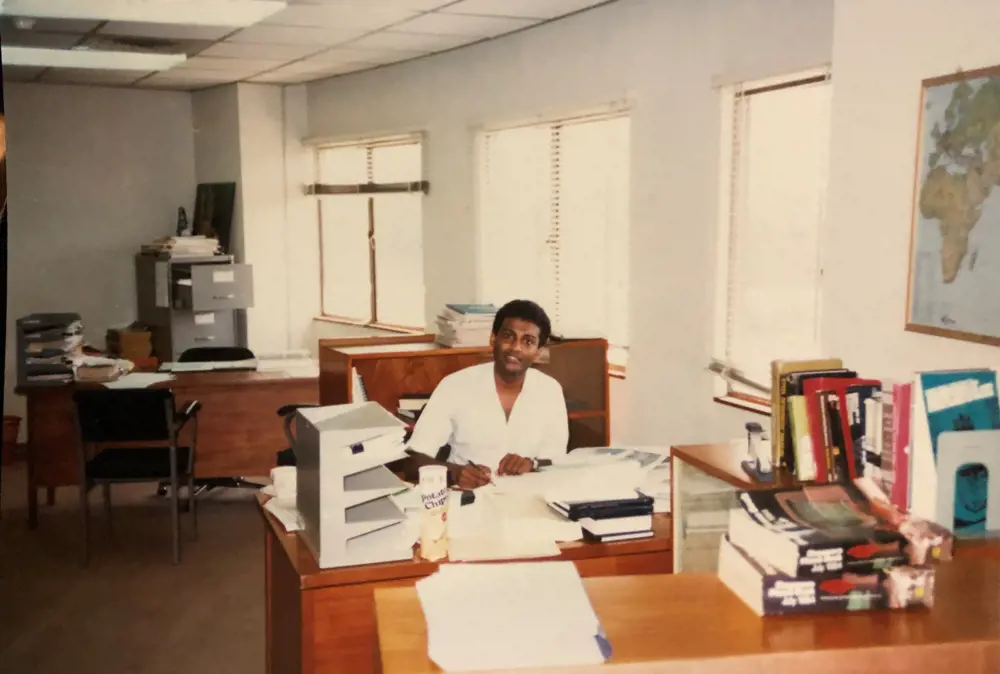
Dr RV Ahilan in Singapore in 1984, shortly after starting at Noble Denton
Offshore
With a PhD completed, it was natural to look for a job in offshore oil and gas. There was also the opportunity to venture into uncharted depths, intellectually as well as literally. Civil engineering had been around for a long time, with the burden of history and codes and standards developed over many years. “Moving offshore gave you the ability to construct new things or new concepts, and to realise those new concepts,” says Ahilan. Oil and gas discovery and development were still developing areas of offshore engineering, with fewer set ideas about things. “The subject that I got conned into believing was the greatest subject in the world meant that I got into offshore oil and gas. People were willing to listen to new ideas, willing to start from first principles to solve problems.”
It was at Cambridge where a careers adviser suggested that Ahilan should talk to one of the consultants in offshore engineering, Noble Denton. Advised that the company liked to do things from first principles, Ahilan’s career path was set. “I got very excited about that and applied to join them.” When he started work at Noble Denton, he was asked to look at offshore platforms where there was seabed erosion.
The effect of sediment recently made global headlines, when there were attempts to move sediments to free a large cargo carrier blocking the Suez Canal. While this maritime challenge did not land on Ahilan’s desk, ABL Group was asked to advise on the fate of containers stuck on the stranded vessel. The company frequently gets involved in recovering vessels or salvaging wrecks. “We get appointed as an independent party who can look at the whole problem without fear or favour when competing interests are at play in distressed situations.”
One of the biggest projects Ahilan’s firm was involved with was the grounding of the Costa Concordia off the Italian island of Giglio. “Within an hour, we got called by the protection and indemnity club that insured the vessel.” There then followed five more years of work, to help to contain the costs and to recover the ship from the grounded location.
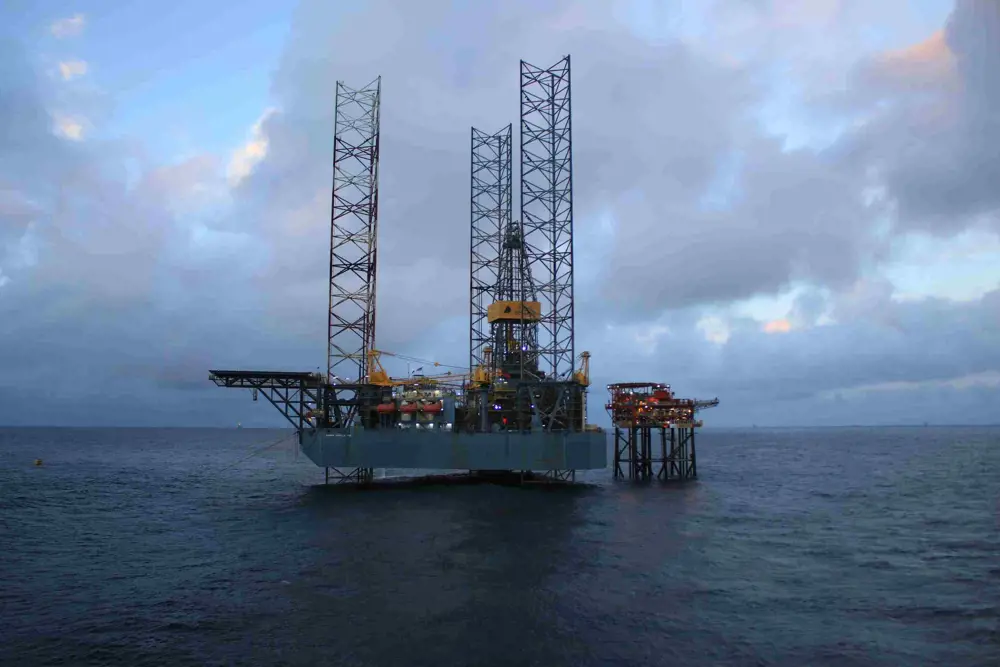
RV Ahilan played a key role in writing the engineering codes for the safe operation of the jack-up rigs that were essential to the development of the UK’s North Sea oil and gas © BP
Industry standards
Asking Ahilan to describe his own most interesting engineering project takes him back to his early days in offshore oil and gas, when he helped to establish the standards for jack-up oil and gas rigs. “I saw the abyss of my career, and I saw the peak within the playing out of that particular project,” he explains.
Before a drilling company could move a rig on to an oilfield, it had to satisfy the requirements of the insurance coverage. In the early days of offshore exploration, insurers didn’t know where to begin with these new monsters, which Ahilan describes as “both a structure and a machine”. So the insurers called in their engineering consultants at Noble Denton. There was a massive dispute in the early 1980s about the criteria for approving an offshore jack-up rig, Ahilan explains. “I don’t know who had the wisdom to volunteer me,” he jokes, “but I was volunteered to develop a proposal on how to resolve this issue.” He was brought into an industry-wide group to develop a methodology that everyone could sign up to.
I saw the abyss of my career, and I saw the peak within the playing out of that particular project
Ahilan came up with an approach that didn’t get very far. “I got ambushed by a major international oil company that completely disagreed with the proposals that we were putting forward.” Still only in his late 20s, Ahilan took this rebuff hard and even contemplated leaving his job. The next day, the oil major asked Ahilan to drop by. The company wanted to oversee the outcome and the idea of an industry approach went out the window. “They invited us to do the work directly for them,” he explains.
After that first phase, with the company on side, the Noble Denton approach went on to become an industry project. Ahilan returned to the fray when it was time to turn the collective result into an industry code that should apply for jack-up rigs to achieve consent. “I was then involved in developing the methodology for structural reliability analysis that eventually resulted in the safety factors that are in the current standards used for jack-ups.”

The irony is not lost on Ahilan that a champion of renewable energy has a passion for cricket and fast cars, like his six-year-old Maserati Quattroporte, but he is quick to point out that he was also an early owner of a Tesla electric car
The oil company that originally rejected his proposal eventually told Ahilan that it liked what he had done and that it had helped it to understand what the different safety factors might imply for the safety of such platforms. “I thought it was a good win,” he adds. “That was probably for me the most enjoyable project and probably the thing that established my reputation in the industry.”
This was not Ahilan’s first foray into writing codes. In the wake of the Piper Alpha disaster in 1988, when a fire destroyed a production platform killing 167 people, he was called in to advise on one of the many issues that arose in the subsequent inquiry. The codes behind the engineering of mooring systems of floating structures, he explains, hadn’t taken into account slowly varying second order forces. The UK’s Department of Energy invited Ahilan to contribute to the guidance of mooring development, which led to him participating in and then convening the ISO group that created the industry standard. He credits this work as establishing him as the go-to engineer for the development of safety factors for design codes.
It was also around that time that Ahilan began to see how engineers might have to accommodate the impact of climate change. In the early 1990s he worked as an advisor to Shell, on an installation in the Norwegian North Sea that turned out to be ahead of its time. “It is the first example that I can recall, and it may have been the first example ever, of recognising the impact of global warming in sea-level rise. We used an additional sea-level rise in the calculation to figure out what sort of clearance we should have between the still-water level in the North Sea and the underside of the deck on which people will be living and working. It was installed in 1996 but was designed to last for 70 years.”
Elevating the standards for oil rigs
🧮 Probabilistic analysis and talks with the oil and gas industry
Jack-up rigs are the life blood of offshore oil and gas exploration and development, moving from site to site as companies investigate new prospects and prepare for the arrival of production platforms that are built to spend years on one site. In the early days of the North Sea’s oil boom, the development of jack-up rigs raised a new challenge. How could the industry certify their safety in deployment and operation?
Ahilan was called in when the industry was trying to come up with a collective approach to addressing those questions. Building a jack-up rig, says Ahilan, is not like designing a fixed platform. “During the build of a production platform, you are calculating but if you need to you can put in a little bit more steel. With a jack-up you have got to absolutely make sure that it was light enough to float so that it can be moved between drilling locations.”
After he had eventually persuaded the oil and gas industry to accept his approach, Ahilan had a shock. “I had to shed deterministic thinking, drummed into me throughout my university education.” Instead, Ahilan explains, he had to apply probabilistic analysis. He had to abandon the usual engineering approach, with calculations that considered not only the properties of the materials and the possible loads on them, for example from waves that are likely to occur once in a century, but also the uncertainties in them.
When engineers design structures for anticipated conditions, a static rig for example, they can put various known values into a calculation. They know that no structure can be guaranteed 100% safe and that there are risks involved in any design. Engineers handle those uncertainties by simplifying them into a set of safety factors written into industry codes. This is where Ahilan carried out probabilistic analysis to derive those safety factors, laying the foundations for the codes that engineers would use when designing jack-up rigs.
For every structure, he explains, there is a finite probability of failure. “It doesn’t matter what structure it is, just because you meet the safety factor does not assure you the safety forever. All you are trying to do is to reduce that finite probability to a level that society is comfortable with. Then the question arises how do you know that you have done that? That is where the codes come in. That is where people who generate codes have to perform these analyses in a probabilistic way and come up with failure chances that society is implicitly accepting.”
Ahilan is quick to point out that engineering is essentially a team pursuit. “I don’t want to claim that I wrote the code,” he insists. “I led the project that derived the safety factors,” he explains. “It then had to be put into a code. If there was one person who was most responsible for coordinating and putting that code together for the Society of Naval Architects and Marine Engineers in the US and now adopted into ISO, it was Mike Hoyle. He is a very good friend of mine.”
Renewable energy
Ahilan talks of his career as being in two parts, starting in engineering and moving increasingly into executive roles.
As a senior executive in GL Noble Denton, Ahilan had managed teams of engineers and mariners in shipping and oil and gas. When asked to run GL Garrad Hassan, the renewables company, there was, he admits, muttering among the renewables engineers. As Ahilan puts it, he sensed that they were asking “what does he know about renewables?” In the event, he reckons that there is no greater enthusiast for renewables than a convert who may well be more passionate than some of the people who were there in the first place. After all, the skills needed to make offshore renewable energy a mainstream engineering business have much in common with putting oil rigs on the seabed or ensuring that the operators of ocean-going vessels get the advice that they need to run their businesses. This has enabled him to push the growth strategy for renewables.
The challenge for Ahilan when he went into renewables was to make it commercial. “I have always argued that renewables will be the way forward but it cannot be the way forward if you’re expecting people to wear hair shirts in order to move forward or have to go cap in hand for subsidies all the time. So let’s put our mind to making sure that this is commercially astute, socially astute, in order for it to thrive.” He uses an engineering rationale to explain his approach. “As an engineer I find it somewhat symmetric, to be able to use energy at the pace at which we receive it rather than use in a century what has been in place for millions of years. That is why I am passionate about driving the growth of renewables. The sustainability of it will absolutely trump everything else."
As an engineer I find it somewhat symmetric, to be able to use energy at the pace at which we receive it rather than use in a century what has been in place for millions of years
Career timeline and distinctions
Born, 1960. Studied civil engineering at the University of Leeds, 1977. Studied an MS in civil engineering at the California Institute of Technology, 1980. Studied a PhD in engineering fluid mechanics at the University of Cambridge, 1981. Engineer at Noble Denton, 1984. Managing Director, Noble Denton Europe, 2000. EVP, GL Noble Denton, 2009. President, GL Noble Denton Americas, 2011. President, GL Garrad Hassan, 2012. EVP, DNV GL Renewables Advisory, 2014. Group CEO, LOC Group, 2019. Fellow, Royal Academy of Engineering, 2020. Chair of Trustees, Marine Technology Trust, 2020. Chief Energy Transition Officer, AqualisBraemar LOC, 2021.
Universities and research
Asked to list other career highlights prompts Ahilan to talk about his involvement with universities. He maintains links with the University of Leeds with a personally sponsored lecture at the Leeds Institute for Fluid Dynamics named in honour of the academic who sucked him into fluid mechanics, John Fox. Leeds is, he points out, the only centre for doctoral training in fluid mechanics in the UK.
Ahilan also chairs the Marine Technology Trust, a 20-year-old charity that supports undergraduate students who need help to complete a project in industry in just about any aspect of marine engineering. “It is not a large trust,” he explains, “but it makes a difference to the people who are unable to do their undergraduate projects.”
Ahilan’s current support for academic engineering also takes him to the frontiers of research in renewable energy. He was a keen supporter of two of the eight projects that recently shared £7.5 million from the Engineering and Physical Sciences Research Council (EPSRC) through its support for wave energy converters. Ahilan will chair the group of industrial advisors for the WavE-Suite project led by Qingwei Ma, Professor of Hydrodynamics at City, University of London. The project plans to address the lack of tools for assessing the ability of wave energy systems to survive extreme marine conditions. Professor Ma says Ahilan’s “extensive and wide experience in general offshore engineering and offshore renewable energy, and his knowledge in marine hydrodynamics put him in an irreplaceable position to give us invaluable suggestions and guidance from a point of view of offshore engineering practitioner.”
Ahilan takes a business view of the prospects of wave energy from where he sits in the world of marine technology. “I am not even convinced of wave and tidal energy commerciality within the next 10 years,” he says. “If I look at 2050 even, I think that the wave and tidal energy contribution to the grid is going to be sub 10%, maybe even one percentage.” Although he is convinced that the research is important, in the same way that it was worth landing on the Moon. “It is not going to transform the energy system, but what it might do is to transform the technologies that are available for application to all sorts of other things. It is getting to the cutting edge.” And that cutting edge will apply to the maritime technologies that have been Ahilan’s domain since he was seduced into fluid dynamics as an undergraduate.
***
This article has been adapted from "Sound moorings for a renewable career", which originally appeared in the print edition of Ingenia 87 (June 2021).
Keep up-to-date with Ingenia for free
SubscribeRelated content
Environment & sustainability
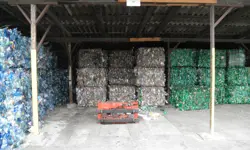
Recycling household waste
The percentage of waste recycled in the UK has risen rapidly over the past 20 years, thanks to breakthroughs in the way waste is processed. Find out about what happens to household waste and recent technological developments in the UK.

Upgrade existing buildings to reduce emissions
Much of the UK’s existing buildings predate modern energy standards. Patrick Bellew of Atelier Ten, a company that pioneered environmental innovations, suggests that a National Infrastructure Project is needed to tackle waste and inefficiency.
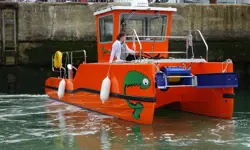
An appetite for oil
The Gobbler boat’s compact and lightweight dimensions coupled with complex oil-skimming technology provide a safer and more effective way of containing and cleaning up oil spills, both in harbour and at sea.
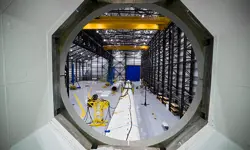
Future-proofing the next generation of wind turbine blades
Before deploying new equipment in an offshore environment, testing is vital and can reduce the time and cost of manufacturing longer blades. Replicating the harsh conditions within the confines of a test hall requires access to specialist, purpose-built facilities.
Other content from Ingenia
Quick read

- Environment & sustainability
- Opinion
A young engineer’s perspective on the good, the bad and the ugly of COP27

- Environment & sustainability
- Issue 95
How do we pay for net zero technologies?
Quick read

- Transport
- Mechanical
- How I got here
Electrifying trains and STEMAZING outreach

- Civil & structural
- Environment & sustainability
- Issue 95